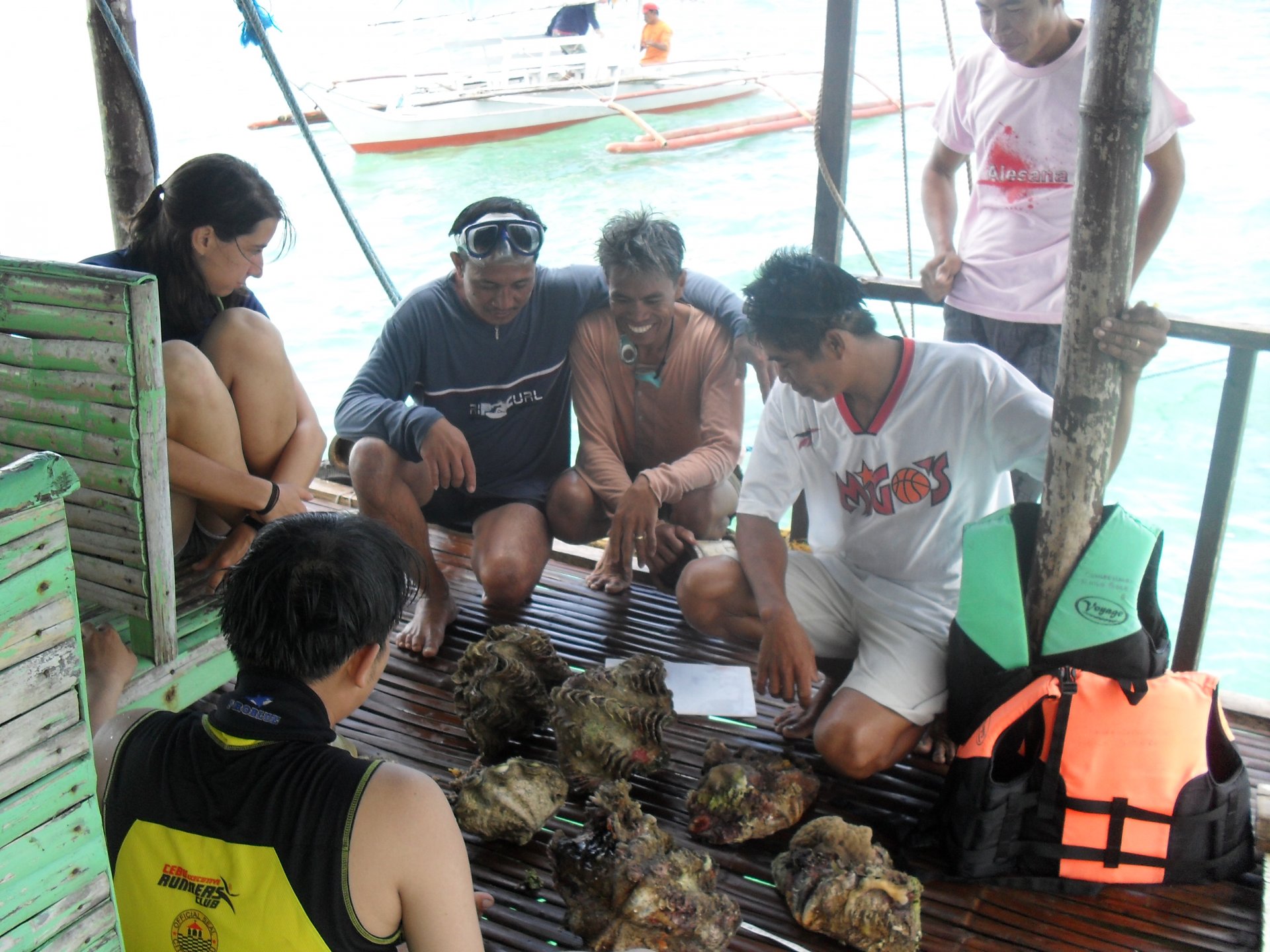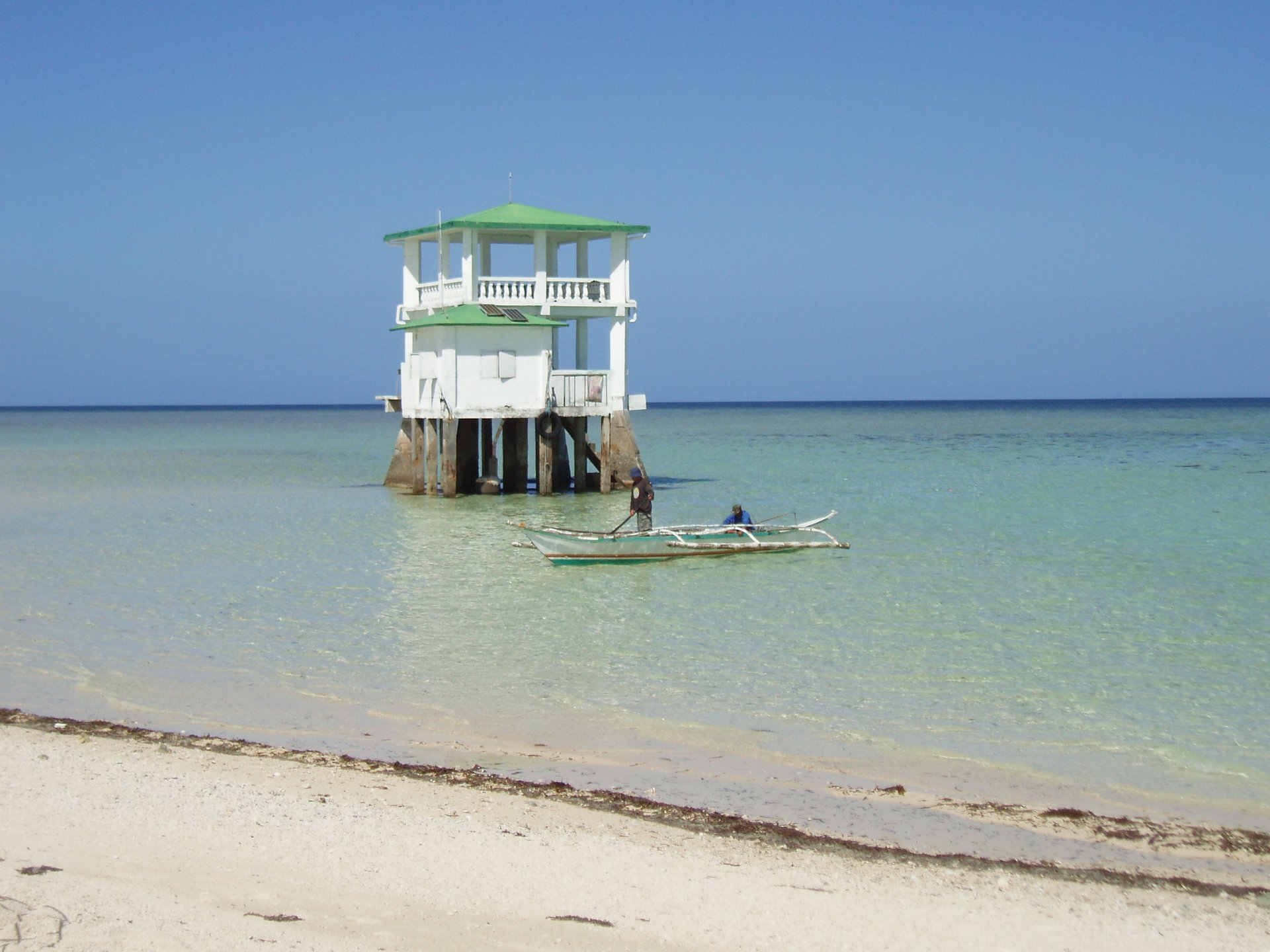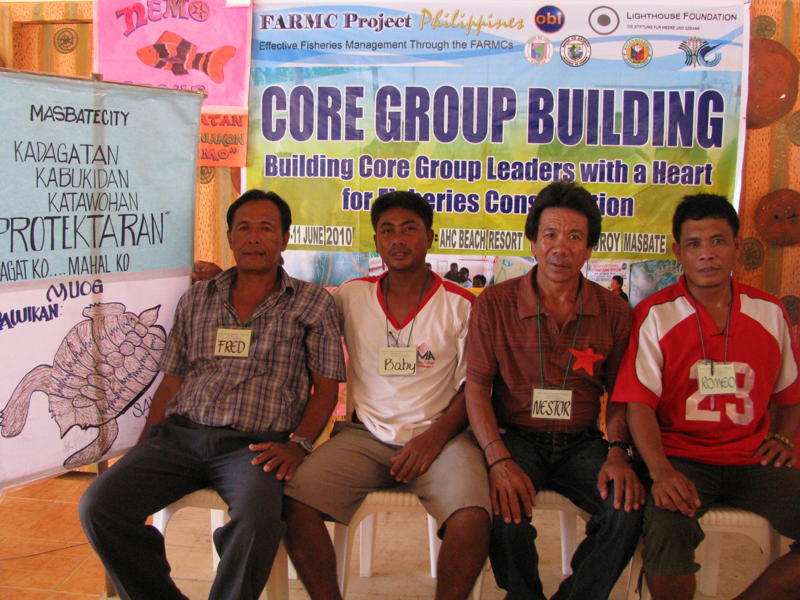- Lighthouse Foundation
- Projects
- Philippines: FARMC-Project completed in 2011
- Project details Philippines
Project details Philippines
Project information
Report by Gloria C. Diaz
Our project, little as it may seem in the overall national coverage because of the selected areas we focused on, it has contributed in the national program.
The project aimed to build capacities of the Fisheries and Aquatic Resources Management Councils (FARMCs) as dynamic and effective partners of local government units for integrated coastal zone management. Activities were focused on the critical role of the fisherfolk in achieving sustainable use of coastal and marine resources as members of the FARMC. The project supports the national program for FARMCs of the Bureau of Fisheries and Aquatic Resources (BFAR).
The project focuses on the critical role of the stakeholders, particularly the fisherfolk in achieving sustainable use of coastal and marine resources, and provides special interventions to give them opportunities for meaningful participation as co-managers of the coastal area through the FARMCs. The FARMC is comprised of representatives from fisherfolk organizations, key members of the local government unit and other stakeholders in the coastal area and serves as a recommendatory body to the local government in matters concerning the management of the coastal area. The FARMCs also seek to put in place policy reform measures and create a policy environment conducive to the sustainable development and management of the municipal waters.
In the past six years the organizing of FARMCs reached its critical mass and now we have organized the FARMCs in 99% of the country’s 924 coastal municipalities and cities. Additionally, we have also organized more than 150 FARMCs in inland and upland areas bordering lakes, rivers, marshes and other freshwater bodies of water.
As a national officer for the implementation of the FARMC program, the nationwide coverage in 7,107 islands speaking different languages can be very daunting. But the project provided me with unique opportunities to attend FARMC meetings on site and to be able to guide them on how to respond appropriately to issues confronting the municipal waters. Sometimes the FARMC itself provide innovative solutions way beyond our expectations.
Fisheries Management
The pilot strategies that we implemented in the three project sites particularly the Nemo was very novel at the same time full of challenges. I wanted it to be owned by the community as it was the only way that the whole strategy can be successful. Thus, contrary from the usual way of doing stock assessments, I designed that the fisherfolk themselves generate the data from their daily fish catch. This was to ensure that they trust the data unlike when researchers gather data, the fisherfolk do not trust the data generated because they accuse researchers of “drawing the data on the table,” it means they think that researchers only generate the figures when they are already sitting on the table. Having them gather the data means that they can attest to the veracity of the data.
This happened in the community data presentation and analysis after one year of data gathering by the Aroroy FARMC. It proved my hypothesis that fisherfolk will defend the accuracy of data that they themselves gathered, and that they trust the process. Having trust in the basis of their decisions also promote cooperation in the ensuing processes such as the formulation of resolutions and other policy measures for fisheries management, which we were able to successfully do in Aroroy.
The aim of Nemo was for them to know their resources for in knowing comes appreciation and from appreciation, caring for these resources and from caring, taking appropriate action to ensure that these resources are sustained.
Immediately after the national office issued the memorandum for the implementation of fish catch by the FARMCs, Davao Region in Mindanao implemented the fish catch training. The Bicol Region in Southern Luzon followed. We expect others to follow suit. By now we have many FARMCs gathering their fish catch already. It is remarkable that the Local Government Units are fully supporting the program.
Greening the Shorelines, Setting a New World Record
Special Project – On-site Trainings, so called SPOT, are site-specific projects to equip the target sites with the necessary technical skills and know-how on the sustainable development and management of the coastal areas were provided through training/workshops delivered by competent resource speakers from the project’s pool of experts
In the SPOT on mangrove management that we started way back in FARMC Phase I we were able to prove that we can make the fisherfolk aware and to care about not only for the fishes at sea, but also on related ecosystems that affect fisheries productivity. Before the FARMCs, BFAR has no program whatsoever on the management of mangrove forests because it is under the jurisdiction of the Department of Environment. But in FARMC we cannot disregard the mangroves just because it is not under BFAR’s jurisdiction. So in the FARMC Project SPOT on mangroves we taught them about mangroves and how to manage the mangrove areas. From the SPOT of FARMC I we were able to establish that fishers can take a responsibility over the mangroves– and do something about it to improve their coastal environment and enhance their fisheries. We were able to mobilize coastal communities in reforesting their wetlands, together with students and volunteer groups.
In 2008 we in the National FARMC Program Management Center made mangrove planting into a national program by launching the first ever nationwide simultaneous planting of mangroves as a fisheries productivity enhancement, biodiversity conservation and climate change adaptation strategy. The FARMCs led the planting activities and were joined by other agencies, the police force, volunteer groups, the media and even the military. We were planting mangroves at the rate of half million trees per year. In the upland FARMCs planted forest trees in watershed areas. By 2011 we were able to plant more than two million mangroves! This is equivalent to more than two hundred hectares reforested during the period.
Amazingly, today mangrove planting has become a priority program of the BFAR --- just very recently. In July this year, BFAR has ordered all its regional offices to intensify its support for mangrove reforestation activities nationwide.
On Whales and Dolphins
We had a special focus on endangered species in FARMC Phase I, training our FARMCs about marine mammals and how the FARMCs can contribute to saving stranded animals along the beach. We had a very positive response from the FARMC in that initial training. Thus, we pursued that initiative through the years, spreading the program in a national scale as my office continued its cooperation with the Ocean Adventure and with the University of the Philippines Institute of Environmental Science and Meteorology, training all Regional FARMC Coordinators in the country and localizing the marine mammal stranding workshops to Luzon, Visayas and Mindanao with the FARMCs among the major participants.
Thus we were able to successfully establish local stranding response networks nationwide, resulting to increased awareness about these endangered species, an increased effort in responding to stranding incidents of dolphins and whales and even other large marine vertebrates like the whaleshark as well as marine turtles and sharks. To date, we have trained more than 1,500 personnel from our local FARMCs and from various sectors. Among these are medical management trainings especially designed for veterinarians to attend to medical requirements and necropsy.
Incentives
In the past two years we in BFAR were able to successfully implement an incentive system for the FARMCs – by way of identifying the Outstanding FARMC in the Philippines. The Search for Outstanding FARMC aims to recognize the invaluable contributions of the FARMCs to sustainable coastal resources and fisheries development and to promote this participatory management tool.
For several years before that, we in the National FARMC Technical Working Group (for which I am the Chairperson) worked on the criteria on how we will identify the best FARMC. The Levels of FARMC Development that we helped formulate in FARMC II, it was the basis for the criteria in identifying the Outstanding FARMC that the Department of Agriculture approved. The incentive system provides the outstanding FARMC with a cash award that the FARMC can use for their many activities. Because of the successful program, BFAR doubled the original cash award and on top of the cash prize of three hundred thousand pesos the Director gave a million-peso project to support the fisheries law enforcement activities and livelihood of the first ever winner for Outstanding FARMC. The FARMC people were teary-eyed with joy as they received the unexpected prize. The President of the Republic of the Philippines gave the awards to the FARMC in the Presidential Palace. Now the FARMCs are smiling… and the mayors too!
Making A Difference
The project’s special focus was on providing awareness and better understanding among resource users and mobilizing the participation of the coastal communities in the conservation of marine resources and in protecting biodiversity. It aimed to contribute to the economic uplift of the community through the enhancement of management measures for sustainable fisheries, in the process building responsible behaviour among the fishing communities for the protection and sustainable use of marine resources. It spread the benefits of the project in the adjacent communities through a strategy that is based on building core leaders with a heart for the environment and humanity, recognizing the interdependence between people and the marine environment and finding solutions to issues affecting their livelihood and well-being.
The project also piloted specific fisheries management interventions that have been proven to be of significant importance. The development of the software and the experiences and lessons learned from the pilot runs in the three project sites enabled BFAR to develop a national program for FARMC Database and Fish Catch Monitoring with some changes and enhancements on the software and the training program. It has already issued specific instructions for its implementation nationwide. It has also adopted the Core Group Building component as a necessary intervention in building leadership capabilities and commitment among the FARMCs. BFAR is fully supporting these initiatives and has already conducted national trainings for the FARMC Coordinators with full funding from the agency. Regional Trainings to localize the FARMC Database and FARMC Fish Catch Monitoring Program were already being done at the time of the preparation of this report.
Bureau of Fisheries and Aquatic Resources (BFAR)
FARMCs emphasize empowerment of the major stakeholders in the coastal community, particularly the fisherfolk.



